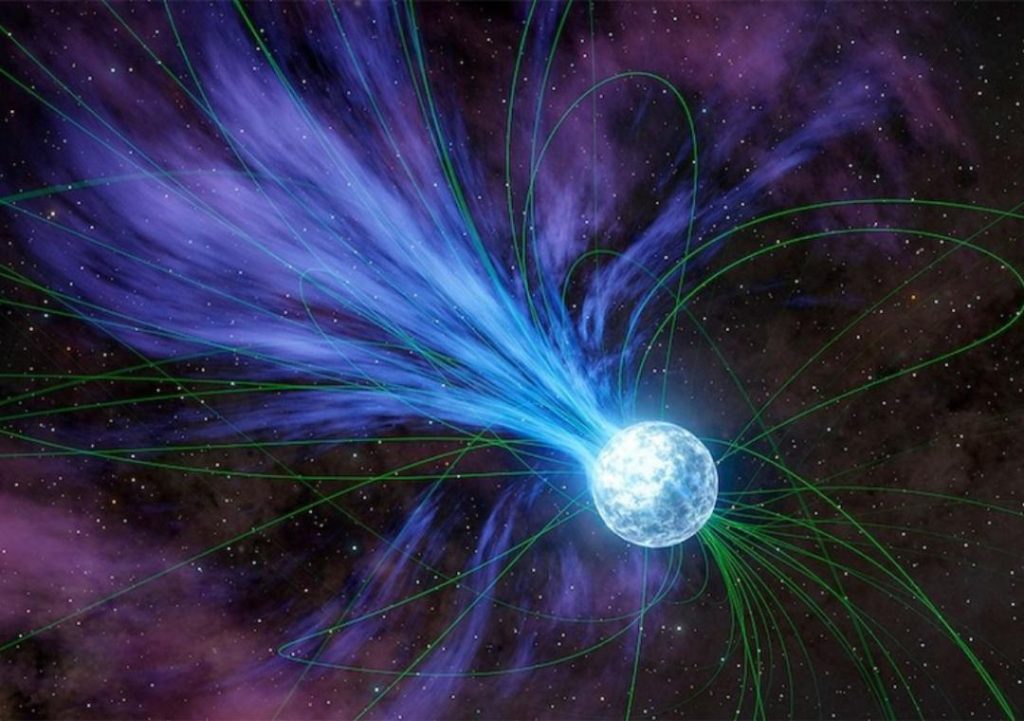
Gold & Platinum Created Through Neutron Stars’ Explosions: Study
For centuries, humans have been fascinated by the origin of precious metals like gold and platinum. While we’ve long known that these metals are rare and valuable, the process by which they were formed has remained a mystery. However, a recent study led by Columbia University student Anirudh Patel has shed new light on the subject, revealing that magnetars, or highly magnetized neutron stars, played a crucial role in creating these elements.
According to the study, magnetars exploded and released flares that contained gold and platinum. These explosions occur approximately once per decade in the Milky Way galaxy and annually across the observable universe. This groundbreaking research has the potential to revolutionize our understanding of the formation of these precious metals.
The Discovery
The study, published in the journal Nature, used data from NASA’s Fermi Gamma-Ray Space Telescope to analyze the remnants of a magnetar explosion that occurred over 20 years ago. The explosion, known as a supernova, was so powerful that it released a massive amount of energy into space, including the elements gold and platinum.
The researchers used a technique called “gamma-ray spectroscopy” to analyze the light emitted by the explosion. By studying the light, they were able to identify the elements present in the explosion and determine their abundance. The results were astounding: the explosion contained significant amounts of gold and platinum, as well as other heavy elements.
How Magnetars Create Gold and Platinum
So, how do magnetars create gold and platinum? The process begins when a massive star runs out of fuel and collapses under its own gravity. This collapse causes the star to heat up, causing a massive explosion that releases a huge amount of energy into space.
At the center of the explosion is a neutron star, which is the incredibly dense remains of the star. As the neutron star spins, its strong magnetic field creates powerful flares that release energy into space. These flares are rich in heavy elements, including gold and platinum.
The gold and platinum are created through a process called “rapid neutron capture,” or “r-process” for short. During this process, heavy elements are created when atomic nuclei absorb neutrons at an incredibly rapid rate. This process occurs in the intense heat and radiation of the magnetar’s flares, creating a “nucleosynthesis” reaction that produces the heavy elements.
The Significance
The discovery of gold and platinum in magnetar explosions has significant implications for our understanding of the formation of these precious metals. For years, scientists have been trying to understand how these metals were created, and this study provides new insight into the process.
The study also has implications for the search for life beyond Earth. The presence of heavy elements like gold and platinum in the universe could provide a clue to the existence of life elsewhere. These elements are essential for life as we know it, and their presence in the universe could indicate that other planets are capable of supporting life.
Conclusion
The study of magnetars and their role in creating gold and platinum is a fascinating area of research that has the potential to revolutionize our understanding of the universe. The discovery of these precious metals in magnetar explosions has significant implications for our understanding of the formation of these elements and the search for life beyond Earth.
As scientists continue to study magnetars and their explosions, we may uncover even more secrets about the universe and the elements that make up our world. Who knows what other mysteries we may uncover in the vast expanse of space?
Source:






